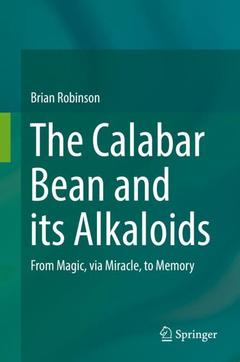Description
The Calabar Bean and its Alkaloids, 1st ed. 2023
From Magic, via Miracle, to Memory
Language: English
Subjects for The Calabar Bean and its Alkaloids:
267 p. · 15.5x23.5 cm · Hardback
Description
/li>Contents
/li>Comment
/li>
Investigations into Calabar beans (the dried ripe seeds of Physostigma venenosum) and their alkaloidal components compose a classical scientific journey throughout some one-and-a-half centuries and not only represent a fascinating aspect of the history of medicine but which is, moreover, still ongoing at the forefront of chemical and medical discovery. Those in particular involving its major such component, l-physostigmine, have led to an understanding of some of the fundamental mechanisms occurring in physiology, pharmacology and biochemistry and, either actually or potentially (by providing a template and thereby acting as a ?lead compound?) have provided a useful treatment for a variety of neurological disorders associated with irregularities in cholinergic transmission in which augmentation of cholinergic activity has proved to be beneficial.
One of the most exciting and interesting aspects of the study of natural products is the “field work” involving ethnological and ethnobotanical studies and which, where apposite, have been alluded to in the present treatise
Many texts on alkaloids are limited to chemical aspects, whereas the somewhat unique and therapeutically significant biological activities of the Calabar bean’s alkaloids (particularly l-physostigmine) has led to a detailed and through presentation of these facets in the present treatise
Throughout this present study, along with a detailed account of what has been done, investigations of what remains to be done have been high-lighted and approaches to effecting this are suggested, including the interpretations of already – published data
These books may interest you

The Alkaloids 193.44 €

Muscarinic Receptors 316.49 €

Muscarinic Receptors 316.49 €

